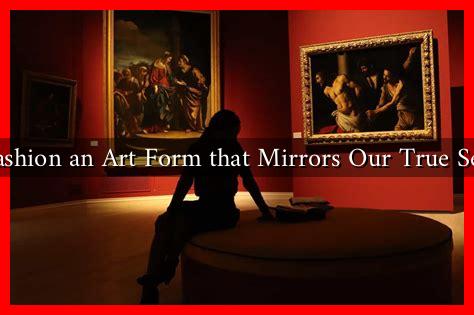-
Table of Contents
Is Fashion an Art Form that Mirrors Our True Selves?
Fashion has long been a subject of debate, often straddling the line between art and commerce. As a form of self-expression, it reflects not only personal identity but also cultural, social, and political contexts. This article explores the intricate relationship between fashion and art, examining how fashion serves as a mirror to our true selves.
The Intersection of Fashion and Art
Fashion and art have been intertwined for centuries. Designers often draw inspiration from various art movements, while artists frequently incorporate fashion into their work. This symbiotic relationship raises the question: can fashion be considered an art form?
- Historical Context: From the elaborate costumes of the Renaissance to the avant-garde designs of the 20th century, fashion has evolved alongside artistic movements. Designers like Coco Chanel and Yves Saint Laurent blurred the lines between clothing and art, creating pieces that were as much about aesthetics as they were about functionality.
- Contemporary Examples: Today, fashion houses collaborate with artists to create limited-edition collections. For instance, the partnership between Louis Vuitton and artist Takashi Murakami resulted in iconic pieces that merged high fashion with contemporary art.
Fashion as a Reflection of Identity
Fashion is a powerful tool for self-expression. The clothes we wear often communicate our values, beliefs, and social status. This section delves into how fashion mirrors our true selves.
- Personal Identity: Individuals use fashion to express their unique identities. For example, a person may choose to wear vintage clothing to reflect their appreciation for sustainability and history.
- Cultural Significance: Fashion can also signify cultural identity. Traditional garments, such as the kimono in Japan or the sari in India, are not just clothing but representations of cultural heritage.
- Social Movements: Fashion has played a pivotal role in social movements. The Black Lives Matter movement, for instance, has seen activists using fashion to make statements about racial justice, with slogans and symbols prominently displayed on clothing.
Statistics and Case Studies
To further understand the impact of fashion as an art form, consider the following statistics and case studies:
- Market Influence: According to a report by McKinsey & Company, the global fashion industry was valued at approximately $2.5 trillion in 2021, highlighting its significant economic impact.
- Consumer Behavior: A survey conducted by the Fashion Institute of Technology found that 70% of respondents believe that clothing reflects their personality, underscoring the connection between fashion and self-identity.
- Case Study – Alexander McQueen: The late designer Alexander McQueen is often cited as a fashion artist. His collections were known for their theatricality and emotional depth, challenging societal norms and pushing the boundaries of what fashion could represent.
The Future of Fashion as Art
As we move into an increasingly digital world, the future of fashion as an art form is evolving. The rise of social media platforms like Instagram and TikTok has democratized fashion, allowing individuals to showcase their personal styles and artistic expressions.
- Digital Fashion: Virtual fashion shows and digital clothing are emerging trends that challenge traditional notions of fashion. Brands like Balenciaga have experimented with digital-only collections, blurring the lines between reality and virtuality.
- Sustainability: The growing emphasis on sustainable fashion reflects a shift in consumer values. Brands that prioritize ethical practices are not only appealing to eco-conscious consumers but are also redefining what it means to be fashionable.
Conclusion
In conclusion, fashion is undeniably an art form that mirrors our true selves. It serves as a canvas for personal expression, cultural identity, and social commentary. As the industry continues to evolve, the relationship between fashion and art will only deepen, reflecting the complexities of human experience. Whether through traditional garments or innovative digital designs, fashion remains a powerful medium for self-expression and a mirror to our collective identity.
For further exploration of the intersection between fashion and art, consider visiting Vogue for insights into current trends and cultural discussions.

